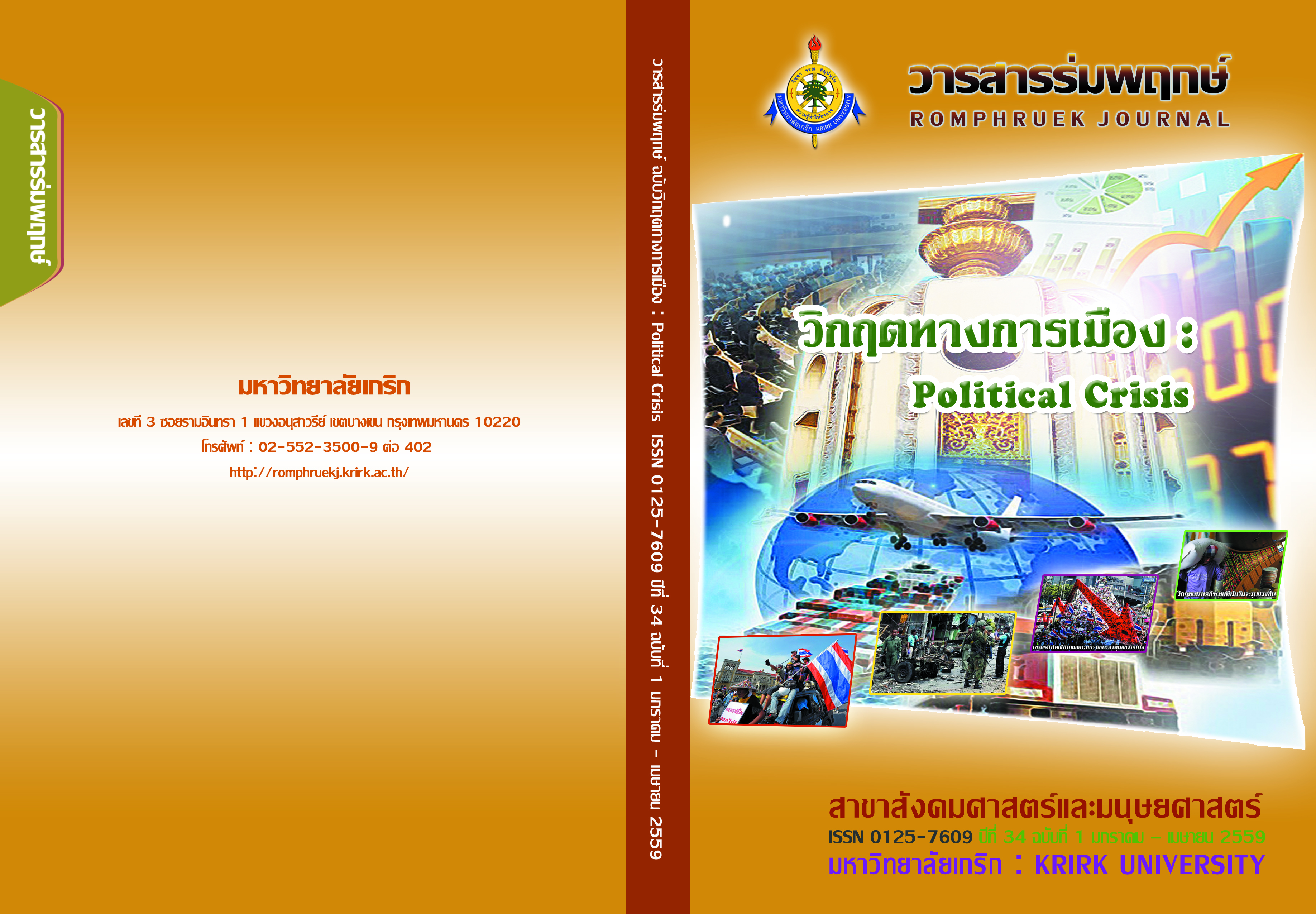เศรษฐศาสตร์การเมืองว่าด้วยเครือข่ายป่าชุมชนในเขตรอยต่อ 5 จังหวัดภาคตะวันออก;Political Economy of the Community Forest Network in the Five Provincial Borders of the Eastern Region
Main Article Content
Abstract
บทความนี้มีวัตถุประสงค์ในการวิเคราะห์ถึงพัฒนาการทางประวัติศาสตร์ของการจัดการป่าในเขตรอย 5 จังหวัดภาคตะวันออก ซึ่งจำแนกออกเป็น 5 ช่วง ได้แก่ ยุคบ้านป่า (ก่อน พ.ศ.2474) ยุคสัมปทานป่าไม้ (พ.ศ.2475 – 2515) ยุคส่งเสริมการปลูกพืชเศรษฐกิจ (พ.ศ.2515 – 2531) ยุคปิดป่าและกลายเป็นเมืองเถื่อน (พ.ศ.3532 – 2541) และ ยุคการส่งเสริมป่าชุมชน (พ.ศ.2542 ถึงปัจจุบัน) โดยพัฒนาการทางประวัติศาสตร์ดำเนินไปภายใต้บริบทของความสัมพันธ์เชิงอำนาจระหว่างกลุ่มพลังต่างๆ ภายในสังคม นอกจากนี้ยังแสดงให้เห็นถึงเงื่อนไขทางด้านทุนทางสังคมและภาวะผู้นำสาธารณะที่ส่งผลต่อการจัดตั้งและการดำเนินงานของเครือข่ายป่าชุมชนรอยต่อ 5 จังหวัดภาคตะวันออก รวมทั้งความสำเร็จของเครือข่ายดังกล่าวในการขับเคลื่อนยุทธศาสตร์ทางด้านการเรียนรู้ การฟื้นฟู และการอนุรักษ์
This article aims to analyze the historical development of forestry management in the area of the five provincial borders of the Eastern Region. The historical development can be divided into five periods – these are, the period of villages in the wild before 1921, the period of forest concession promotion between 1922 - 1972, the period of cash crops promotion between 1972 - 1988, the period of the forest blockade and outlaw organized crime in the communities, and the period of community forest promotion from 1989 to present. This historical development was under the context of power relations between influential groups in society. Additionally, the article also shows the conditions of social capital and public leadership which have effects upon the formulation and operation of the Community Forest Network in the area of the five provincial borders of the Eastern Region, together with the success of this Network in moving its strategies of learning, restoring and conservation.
Article Details
Every article published in the Romphruek Journal of the Humanities and Social Sciences is the opinion and point of view of the authors. Thery're not the viewpoint of Krirk University or the editored department. Any part or all of the articles for pablication must be clearly cited.


